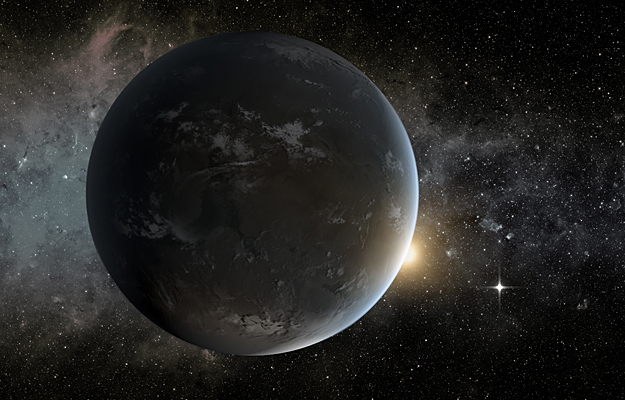The Effect of Orbital Configuration on the Possible Climates and Habitability of Kepler-62f

As lower-mass stars often host multiple rocky planets, gravitational interactions among planets can have significant effects on climate and habitability over long timescales.
Here we explore a specific case, Kepler-62f, a potentially habitable planet in a five-planet system with a K2V host star. N-body integrations reveal the stable range of initial eccentricities for Kepler-62f is 0.00⩽e⩽0.32, absent the effect of additional, undetected planets. We simulate the tidal evolution of Kepler-62f in this range and find that, for certain assumptions, the planet can be locked in a synchronous rotation state. Simulations using LMD Generic GCM indicate that with 3 bars of CO2 in its atmosphere, Kepler-62f would only be warm enough for surface liquid water at the upper limit of this eccentricity range, providing it has a high planetary obliquity (between 60∘ and 90∘).
A climate similar to modern-day Earth is possible for the entire range of stable eccentricities if atmospheric CO2 is increased to 5-bar levels. In a low-CO2 case, simulations with CCSM4 and LMD Generic GCM indicate that increases in planetary obliquity and orbital eccentricity coupled with an orbital configuration that places the summer solstice at or near pericenter permit regions of the planet with above-freezing surface temperatures. This may melt ice sheets formed during colder seasons. If Kepler-62f is synchronously rotating and has an ocean, CO2 levels above 3 bars would be required to distribute enough heat to the night side of the planet to avoid atmospheric freeze-out and permit a large enough region of open water at the planet’s substellar point to remain stable. Overall, we find multiple plausible combinations of orbital and atmospheric properties that permit surface liquid water on Kepler-62f.
Aomawa L. Shields, Rory Barnes, Eric Agol, Benjamin Charnay, Cecilia M. Bitz, Victoria S. Meadows
(Submitted on 3 Mar 2016)
Comments: 68 pages, 14 figures, 6 tables, accepted for publication in Astrobiology
Subjects: Earth and Planetary Astrophysics (astro-ph.EP)
Cite as: arXiv:1603.01272 [astro-ph.EP] (or arXiv:1603.01272v1 [astro-ph.EP] for this version)
Submission history
From: Aomawa Shields
[v1] Thu, 3 Mar 2016 21:00:03 GMT (1412kb,D)
http://arxiv.org/abs/1603.01272








